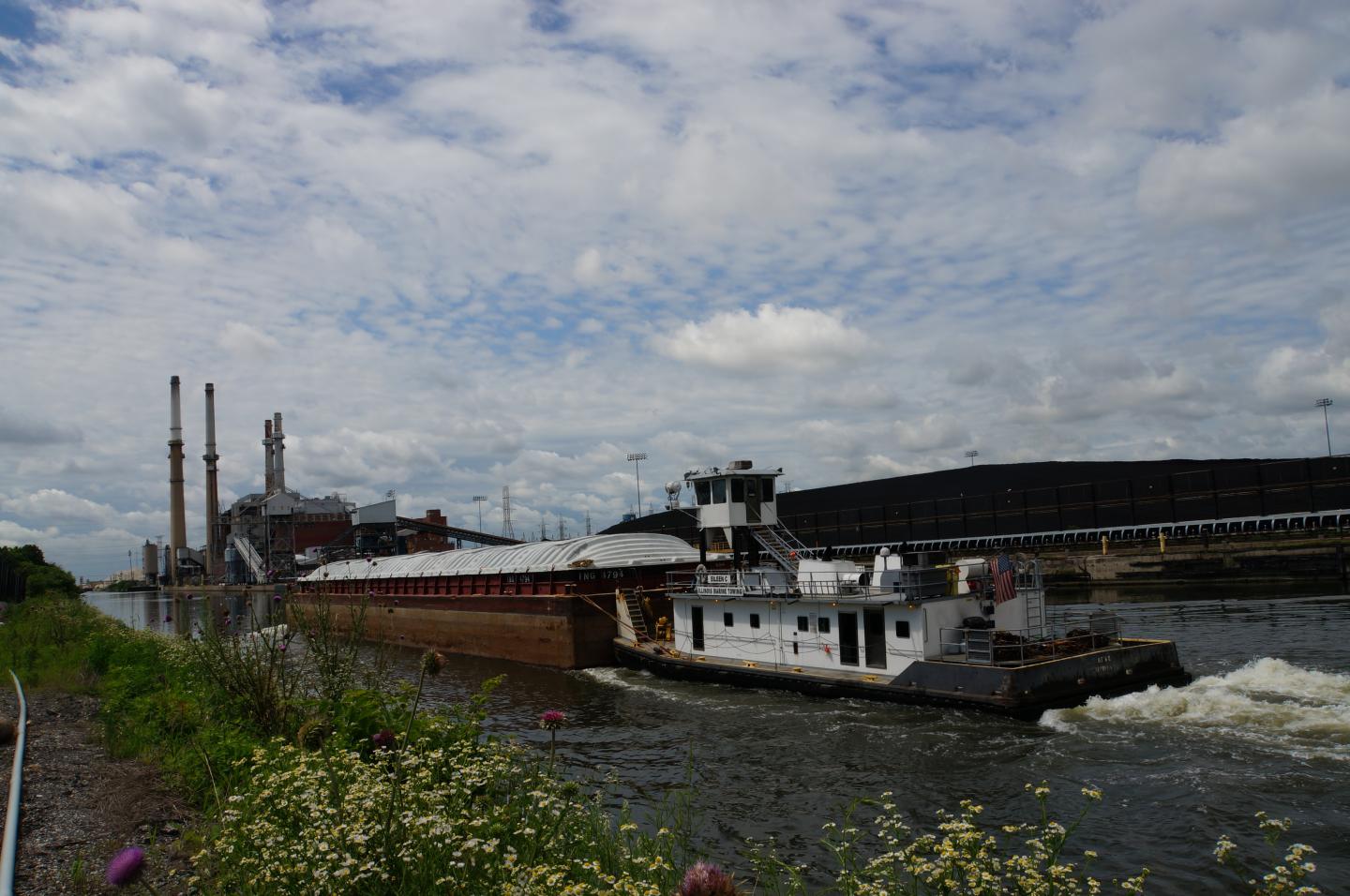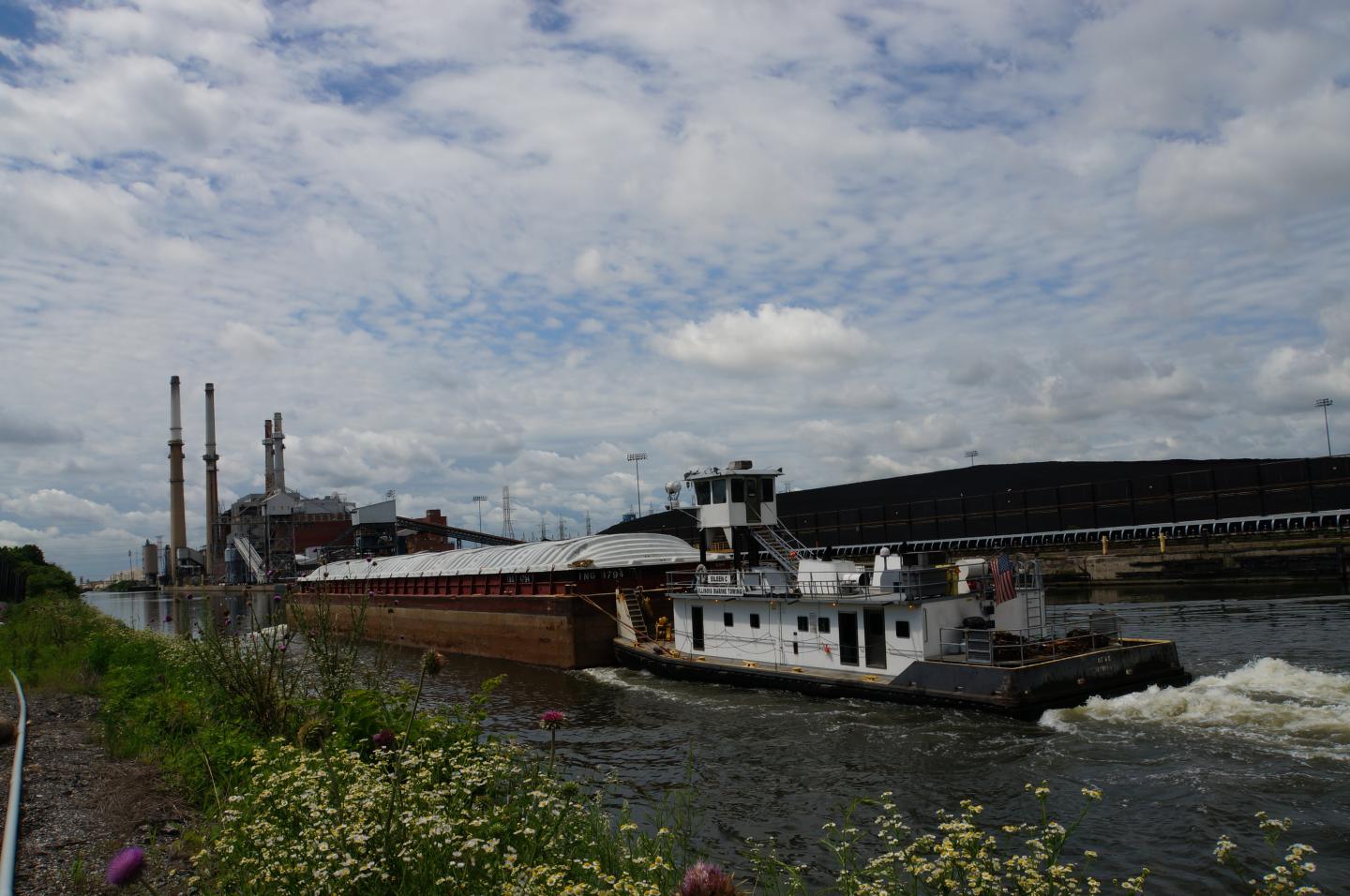
Credit: University of Illinois
URBANA, Ill. – As the city of Chicago has grown in population and industry since it was established more than 180 years ago, so has its need for clean water. Meeting that growing need has presented many challenges. Today, the Chicago Area Waterway System is a complicated network of modified rivers and canals which are used for navigation and shipping, residential and industrial wastewater management, recreation, and aesthetics.
For more than 100 years, the Illinois-Michigan Canal, the Chicago Sanitary and Ship Canal, and the Cal-Sag Canal have connected the Great Lakes and Mississippi River systems. Asian carp, currently confined to the Mississippi River system, are threatening to invade Lake Michigan and the Great Lakes through the Chicago Sanitary and Ship Canal. Researchers reaffirm that providing safe drinking water to Chicago residents must remain the number one priority; however, the Asian carp must be blocked to prevent them from getting into the Great Lakes.
University of Illinois researcher Ken Olson and his colleague from Iowa State University, Lois Wright Morton observe that reversing the flow of the Chicago River in 1892, construction of the Chicago Sanitary and Ship Canal in 1900, and subsequent management still constitute a good solution to the city's unique water problems.
This ingenious feat should be recognized, according to Olson. "A mammoth undertaking, the canal originally had four aqueducts and 17 locks to enable navigation of the 140-foot drop from Lake Michigan to the Illinois River," Olson says. "The permanent reversal of the Chicago and Calumet rivers was an immense municipal public works achievement that became internationally known as one of the seven wonders of American engineering."
The Chicago and Calumet Rivers carry the city's storm and treated sewer water away from Lake Michigan by re-directing it into the Cal-Sag and Chicago Sanitary and Ship canals and the Des Plaines River, south to the Illinois River, Mississippi River, and Gulf of Mexico. However, during high precipitation events, the Chicago area sewage treatment system cannot always store and treat the excess commingled storm and sewer water because of the volume and rate of runoff.
"The increased runoff rate is the result of urban land-use changes," according to Olson. "High- density buildings, concrete, and impervious surfaces have replaced grassed and treed areas that absorb and hold rain water in the soil." The Chicago Sanitary District has added more storage using quarry basins and tunnels under the Chicago area to reduce the prospect of a major storm bringing untreated sewage, viruses, microbes, nutrients, and heavy metals into the Mississippi River System.
The Tunnel and Reservoir Plan (TARP, also known as the Deep Tunnel Project) was created to intercept storm water runoff and raw sewage overflow. "It's essentially a river system constructed under the city,"
Olson says. "TARP consists of 110 miles of tunnels and reservoirs, which are actually old limestone quarries that capture and hold storm water and raw sewage until it can be treated at waste water treatment plants and discharged into the canals and rivers."
According to U of I researcher Cory Suski, although the extensive canal system protects the Lake Michigan water supply, it created another problem–numerous entry points and pathways for invasive Asian carp. "There are 18 sites identified as being at high risk for allowing the movement of aquatic nuisance species between the two basins," Suski says. Suski experiments with using carbon dioxide to repel fish from an area, acting as a nonphysical barrier and help to protect Lake Michigan.
Electric fences have been installed in the Chicago Sanitary and Ship Canal, the only pathway that remains wet all year. In combination with other techniques, the "fences" have been used to prevent invasive Asian carp from entering the Great Lakes.
Restoring the drainage divide ridge and returning the Chicago and Calumet Rivers to their original flow direction into Lake Michigan could be a way to stop the flying Asian carp from invading the Great Lakes, but could create an even greater problem–putting the Chicago drinking water supply at risk. Olson says the Chicago water supply is not in a precarious state and the canal system which reverses the river's flow has not failed in over 100 years.
"The message to policy makers is that they need to continue to fund new ways to block the Asian carp pathway through the Chicago Sanitary and Ship Canal to Lake Michigan," Olson says. "A reversal of the current flow could put Lake Michigan and the Chicago drinking water supply at risk so that is not a viable option. The tunnel projects will continue to store storm and sewer waste water until a time when it can be treated and released to the Illinois and Mississippi Rivers."
###
The study, "Chicago's 132-year effort to provide safe drinking water," is written by Kenneth R. Olson and Lois Wright Morton. It appears in the Journal of Soil and Water Conservation. Olson is a researcher in the Department of Natural Resources and Environmental Sciences in the College of Agricultural, Consumer and Environmental Sciences at the University of Illinois.
A pdf of the full paper is available online. Olson and Wright's book, Managing Mississippi and Ohio River Landscapes, includes a chapter on the Chicago canals.
Funding was provided by the University of Illinois, USDA National Institute of Food and Agriculture Integrated Water Program agreement, Heartland Regional Water Coordination Initiative, and Iowa State University.
Media Contact
Debra Levey Larson
[email protected]
217-244-2800
@ACESIllinois
http://aces.illinois.edu/
############
Story Source: Materials provided by Scienmag





